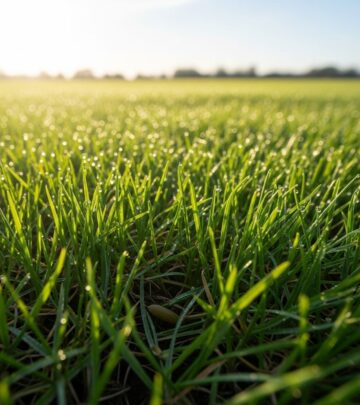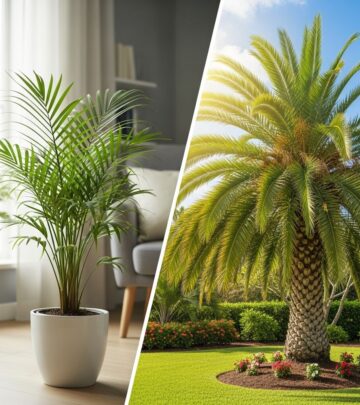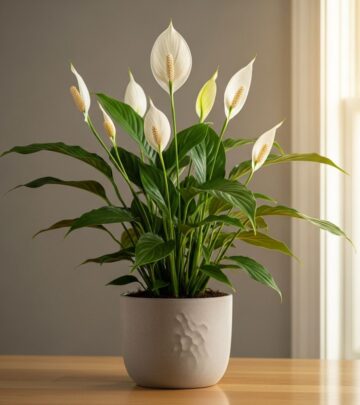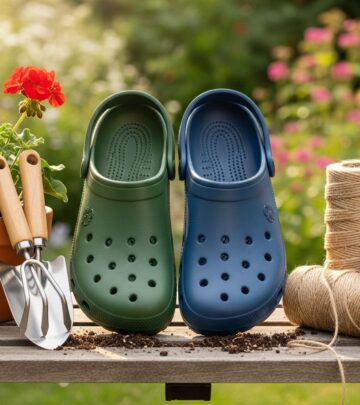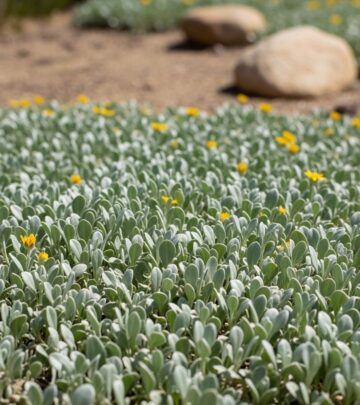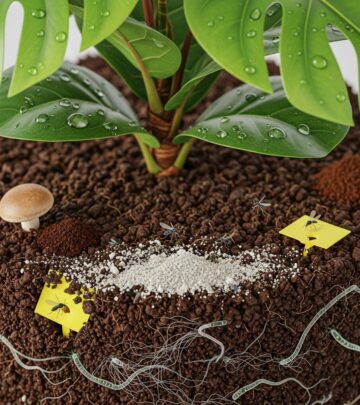Neem Oil for Pest Control: 16 Pests & Diseases You Can Conquer
Harness nature’s power to protect your plants from pesky invaders with this secret.
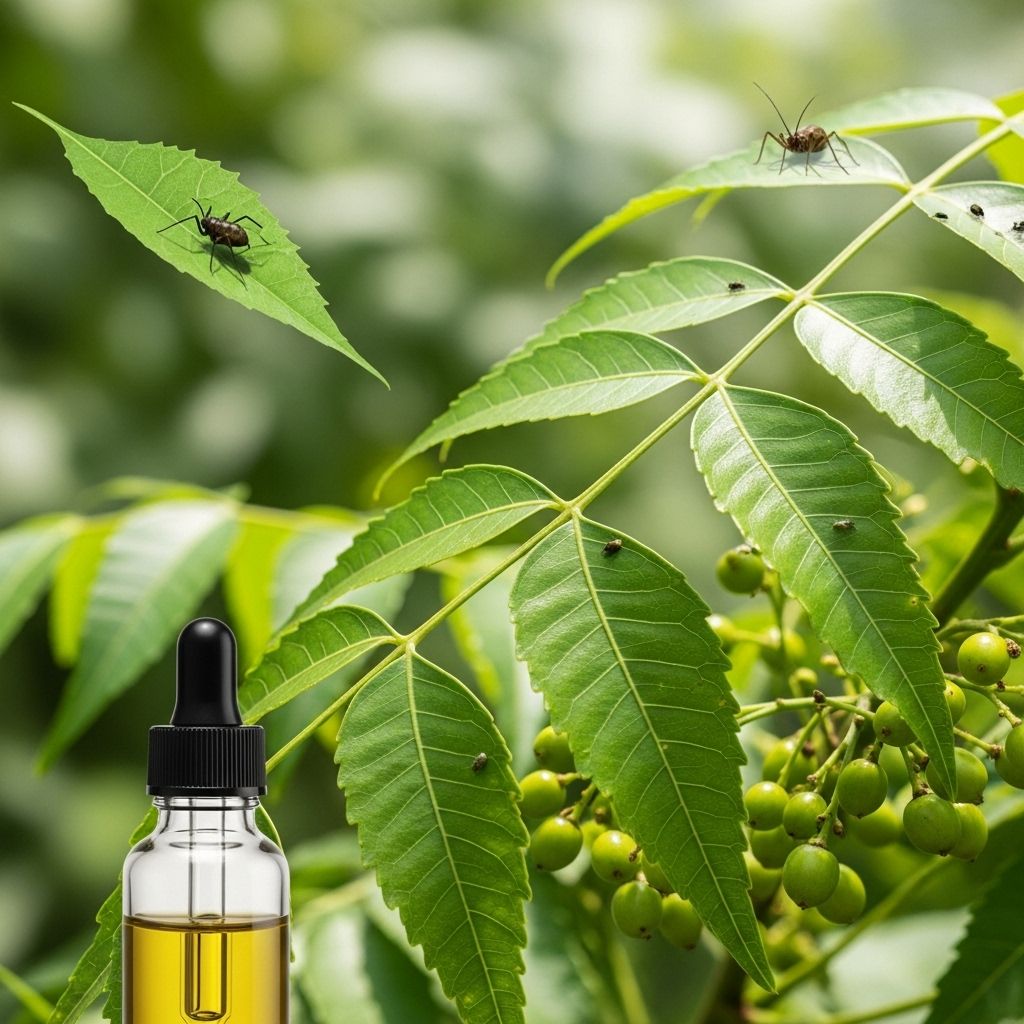
Image: HearthJunction Design Team
The Complete Guide to Neem Oil for Garden Pest Control
For gardeners seeking natural solutions to common plant problems, neem oil stands out as one of nature’s most effective remedies. This powerful botanical extract has been used for centuries to protect plants and improve garden health without harsh chemicals. Whether you’re battling persistent aphids on your roses or fighting powdery mildew on your zucchini plants, neem oil offers a versatile and environmentally friendly alternative to synthetic pesticides.
Understanding how to properly use neem oil can transform your garden maintenance routine and help you achieve healthier plants with minimal environmental impact. This comprehensive guide explores everything you need to know about neem oil applications, benefits, and best practices.
What Is Neem Oil?
Neem oil is a natural vegetable oil extracted from the seeds and fruit of the neem tree (Azadirachta indica), which is native to the Indian subcontinent. This remarkable tree has been revered for thousands of years for its medicinal and agricultural properties. The oil is typically cold-pressed from neem seeds to preserve its beneficial compounds and active ingredients.
The primary active component in neem oil is azadirachtin, a compound that disrupts insect growth and feeding patterns. Unlike harsh chemical pesticides that can harm beneficial insects and potentially contaminate soil and water sources, neem oil breaks down quickly in the environment and offers targeted pest management with minimal collateral damage.
Neem oil has a distinctive smell often described as garlicky or sulfurous. While this scent might be noticeable during application, it typically dissipates within hours and helps repel certain pests through its aromatic properties alone.
How Neem Oil Works Against Garden Pests
Neem oil works through multiple mechanisms to control garden pests, making it an exceptionally versatile garden remedy. Understanding these different modes of action helps gardeners appreciate why neem is so effective against a wide range of problems:
Insect Growth Regulation
The azadirachtin in neem oil interferes with insect hormone systems, effectively disrupting the growth and development of many pest species. When insects ingest neem oil, it prevents larvae from maturing properly, interrupts molting processes, and reduces the ability of adult insects to reproduce. This growth-regulating effect makes neem oil particularly valuable for long-term pest management strategies.
Feeding Deterrent
Neem oil acts as an antifeedant, making treated plants unpalatable to many insects. When pests encounter neem-treated foliage, they’re less likely to feed, which helps protect plants from damage while gradually reducing pest populations as insects move elsewhere or fail to thrive without proper nutrition.
Physical Barrier
When applied as a spray, neem oil coats insects with a thin film that can block breathing pores (spiracles) in some soft-bodied insects, effectively suffocating them. This physical control method works on contact with pests like aphids, mealybugs, and spider mites.
Fungicidal Properties
Beyond pest control, neem oil exhibits impressive antifungal properties, making it effective against common plant diseases like powdery mildew, black spot, rust, and various leaf spot diseases. The oil forms a protective coating on leaf surfaces that prevents fungal spores from germinating and spreading.
Common Garden Pests and Diseases Controlled by Neem Oil
Neem oil can effectively manage numerous garden problems, making it a versatile addition to your plant care toolkit. Here’s a comprehensive list of the pests and diseases that neem oil can help control:
Insect Pests
- Aphids – These small sap-sucking insects that cluster on new growth and leaf undersides
- Whiteflies – Tiny white flying insects that feed on plant sap and excrete honeydew
- Spider Mites – Microscopic arachnids that cause stippling on leaves and fine webbing
- Scale Insects – Immobile pests that attach to stems and leaves, appearing as bumps
- Mealybugs – White, cottony pests that cluster in leaf axils and on stems
- Thrips – Slender insects that scrape plant tissues, causing silvery scarring
- Leafminers – Larvae that tunnel between leaf surfaces, creating distinctive patterns
- Caterpillars – Larval stage of butterflies and moths that feed on foliage
- Japanese Beetles – Metallic green beetles that skeletonize leaves
- Fungus Gnats – Small flies whose larvae damage plant roots
Fungal Diseases
- Powdery Mildew – White powdery coating on leaf surfaces
- Black Spot – Dark circular lesions primarily affecting roses
- Rust – Orange-brown pustules on leaf undersides
- Leaf Spot Diseases – Various fungal infections causing spotted foliage
- Anthracnose – Disease causing dark, sunken lesions on leaves, stems, and fruits
- Botrytis – Gray mold affecting flowers, fruits, and foliage
How to Make Neem Oil Spray
Creating your own neem oil spray is simple and economical. By making fresh batches as needed, you’ll ensure maximum effectiveness for your garden applications. Here’s a step-by-step guide to preparing a basic neem oil spray solution:
Basic Neem Oil Spray Recipe
Ingredients:
- 1-2 teaspoons of high-quality pure neem oil
- 1 teaspoon of mild liquid soap or insecticidal soap (acts as an emulsifier)
- 1 quart (32 oz) of warm water
- Spray bottle or garden sprayer
Preparation Instructions:
- Fill your spray container with warm water (not hot). Warm water helps the oil mix more effectively.
- Add the mild liquid soap to the water and mix gently to distribute the soap throughout the solution.
- Measure the neem oil and add it to the soapy water mixture.
- Seal the container and shake vigorously to emulsify the oil into the water. The solution should appear milky.
- Continue shaking periodically during application to keep the solution mixed, as separation may occur.
For stronger concentrations needed for severe infestations, you can increase the neem oil to 1 tablespoon per quart of water, but always test on a small plant area first to ensure no leaf burning occurs.
Storage Tips
Neem oil spray is best used immediately after mixing. If necessary, you can store unused spray for up to 24 hours, but be aware that it will begin losing effectiveness as the active compounds start to break down. Always label any stored solution and keep it out of reach of children and pets.
For the pure neem oil concentrate, store in a cool, dark place with the bottle tightly sealed. Most quality neem oils will maintain potency for 1-2 years if properly stored.
How to Apply Neem Oil to Plants
Proper application technique is crucial for getting the most benefit from neem oil treatments while avoiding potential plant damage. Follow these guidelines for effective and safe application:
Timing Considerations
Apply neem oil solutions during the early morning or late evening hours when beneficial insects are less active and temperatures are cooler. Avoid midday applications when direct sunlight combined with oil can potentially burn plant foliage. For optimal results, choose a day when:
- No rain is forecasted for at least 24 hours
- Temperatures are between 50°F and 85°F (10°C-29°C)
- Wind is minimal to prevent spray drift
Application Process
- Test First – Before treating entire plants, apply a small amount of your neem solution to a few leaves and check for any adverse reactions after 24 hours.
- Shake Frequently – Keep your sprayer or bottle shaking between applications to maintain the emulsion.
- Thorough Coverage – Spray all plant surfaces, including the undersides of leaves where pests often hide and feed.
- Proper Saturation – Apply enough solution to wet the foliage but not so much that it drips excessively.
- Systematic Approach – Work methodically through your garden to ensure complete coverage of all plants requiring treatment.
Application Frequency
For preventative treatment, apply neem oil every 7-14 days. For active infestations, increase frequency to every 5-7 days until the problem is under control, then return to a preventative schedule. Fungal issues typically require applications every 7-10 days until conditions improve.
Remember that consistency is key—neem oil works best as part of a regular maintenance routine rather than as a one-time emergency treatment.
Safety Considerations and Precautions
While neem oil is a natural product with lower toxicity than many synthetic pesticides, proper handling and application remain important for both personal safety and environmental responsibility.
Human and Pet Safety
Although neem oil is generally considered safe around people and pets when used as directed, some basic precautions should be observed:
- Avoid eye contact and prolonged skin exposure
- Wash hands thoroughly after handling neem oil or spray solution
- Keep concentrated neem oil out of reach of children
- Allow sprayed areas to dry completely before allowing pets to access treated garden spaces
- People with known allergies to tree nuts should use caution when handling neem products
Plant Safety
While most plants tolerate neem oil well, some may show sensitivity, particularly under certain conditions:
- Always test new plants with a small application before full treatment
- Young seedlings, newly transplanted plants, and stressed plants may be more sensitive
- Some varieties of ferns, certain herbs, and plants with hairy leaves may show increased sensitivity
- Avoid application during extreme temperature conditions
Environmental Considerations
Neem oil is biodegradable and breaks down relatively quickly in the environment, but responsible use remains important:
- Avoid spraying flowering plants during peak pollinator activity hours
- Prevent runoff into water sources where aquatic organisms might be affected
- Use only the concentration needed for effective control to minimize environmental impact
Frequently Asked Questions About Neem Oil
Q: Is neem oil safe for beneficial insects like bees and ladybugs?
A: Neem oil has minimal impact on most beneficial insects when applied correctly. It primarily affects insects that feed on treated plant tissue. However, direct contact during application can harm some beneficials, so it’s best to spray in early morning or evening when pollinators are less active.
Q: Can I use neem oil on edible plants and vegetables?
A: Yes, neem oil is generally considered safe for use on edible plants when applied according to directions. Always wash produce thoroughly before consumption. For fruiting vegetables, avoid spraying directly on flowers or fruits when possible, and stop applications at least 24 hours before harvest.
Q: Why isn’t my neem oil working against pests?
A: Neem oil works differently than synthetic pesticides, often taking longer to show results. If your neem treatment seems ineffective, consider these factors: insufficient coverage, incorrect concentration, degraded oil (old or improperly stored), incorrect timing of application, or pest resistance. Consistency in application is key for successful pest management with neem oil.
Q: Can neem oil be mixed with other garden products?
A: Neem oil can often be combined with certain other organic treatments, but avoid mixing with sulfur-based products or compounds with high alkalinity. Always test any combination on a small area first, and never mix neem oil with chemical pesticides unless specifically recommended by the manufacturer.
Q: How long does neem oil remain effective after application?
A: Neem oil typically remains active for 3-7 days after application, depending on environmental conditions. Rainfall, intense sunlight, and high humidity can all reduce its persistence. This is why regular reapplication is necessary for ongoing protection during pest or disease pressure.
Conclusion
Neem oil represents one of nature’s most versatile tools for organic garden management. By understanding its properties, preparation techniques, and proper application methods, gardeners can effectively address a wide range of common plant problems while maintaining environmental responsibility.
As with any garden remedy, success with neem oil comes through proper technique, consistency, and observation. With regular use as part of an integrated pest management approach, neem oil can help you maintain healthier plants with fewer pest problems throughout the growing season.
Embrace this ancient remedy with modern applications, and discover why generations of gardeners have relied on the remarkable properties of the neem tree to protect their precious plants naturally.
References
Read full bio of medha deb



